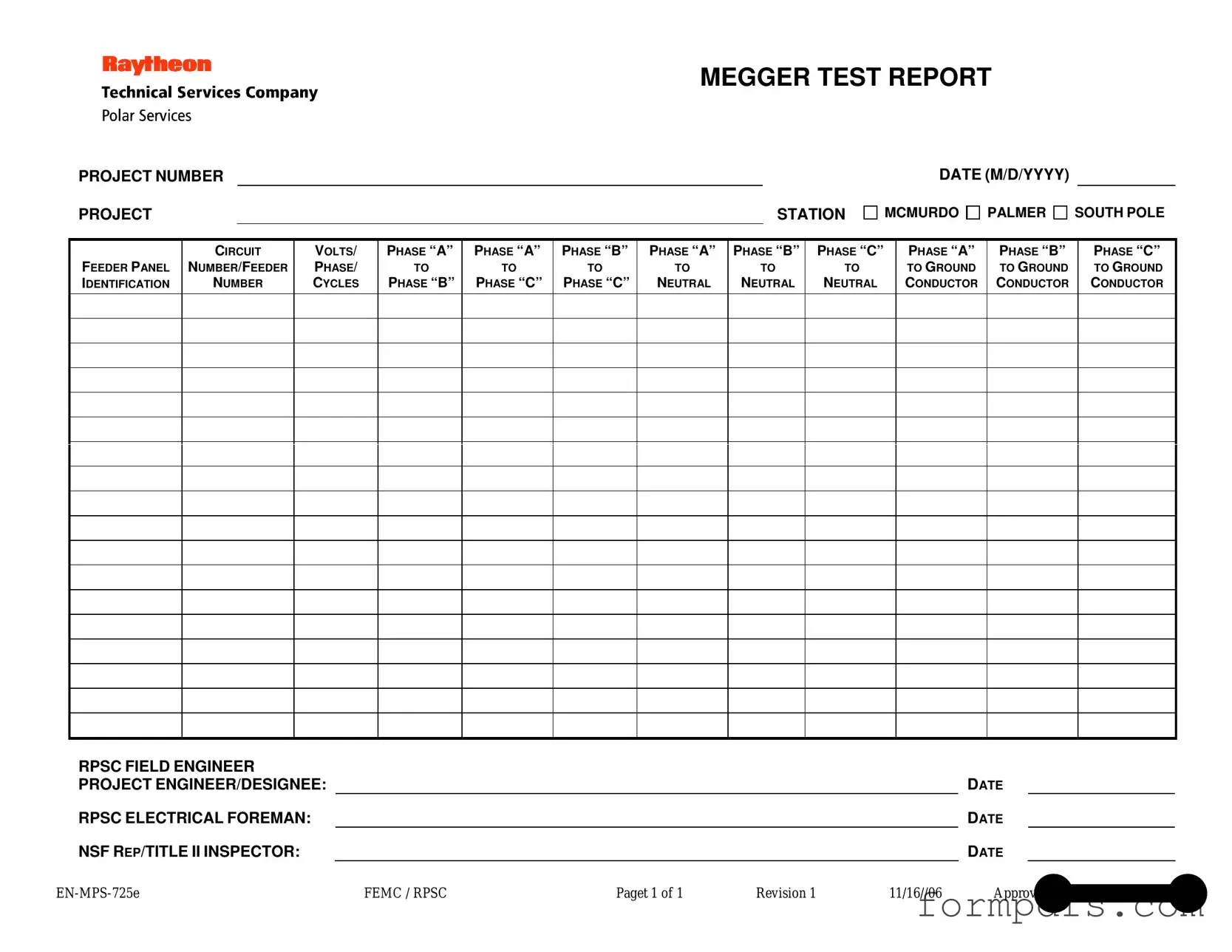The Megger Test form is an essential tool for documenting the results of insulation resistance testing in various electrical projects. This form captures critical information, including the project number, station, and date, ensuring that all tests are accurately tracked over time. Specific details about the electrical systems being tested, such as feeder panel identification and circuit numbers, are also included, allowing for precise identification of each test conducted. Voltage levels across different phases, as well as phase-to-neutral and phase-to-ground readings, are meticulously recorded, providing a comprehensive overview of the electrical system's integrity. Additionally, the form requires signatures from key personnel, including the field engineer, project engineer or designee, electrical foreman, and an NSF representative or inspector, ensuring accountability and verification of the testing process. This thorough documentation not only supports compliance with safety standards but also aids in troubleshooting and maintenance efforts in the future.
